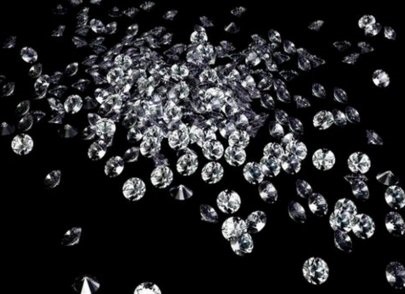In 2018, science magazine reported an international scientific research team led by Chinese and American scientists made a major discovery on the mechanical behavior of diamond at the nano scale: This study observed for the first time that nano diamond can withstand unprecedented huge deformation and can recover to its original state, while the local elastic tensile deformation of single crystal nano diamond can reach about 9%, close to that of single crystal diamond The elastic deformation limit that diamond can reach in theory.
Diamond is the hardest substance in the world. In addition to being used as precious jewelry decoration, another important use is as deep well drilling and glass cutting tools for high-precision cutting of rock, glass and other extremely hard materials. At the macro scale, diamond usually shows no deformation behavior. The result of any extreme attempt to deform the diamond is that the brittle fracture occurs early before the diamond reaches the visible deformation. This also limits the use of diamond in some applications that may be subject to mechanical deformation.

In order to carry out quantitative nanomechanical testing for diamond, a special brittle and hard material, the research group led by Lu Yang, associate professor of mechanical and Biomedical Engineering Department of City University of Hong Kong, China (hereinafter referred to as "CityU") developed a unique nanomechanical experimental method based on the advanced electronic microscope platform of Chengda, and realized the real-time observation of nano diamond cone samples under electron microscope Perform compression bending test. The experimental results show that the single crystal diamond nano cone can achieve unprecedented large deformation and complete instantaneous recovery in a large range.
In order to further quantitatively analyze the elastic deformation, the nanomechanical laboratory team led by Professor Subra Suresh of Massachusetts Institute of technology and senior researcher Daoming conducted accurate and comprehensive simulation analysis on the experimental results. It was confirmed that the elastic deformation of single crystal diamond nano cone on the tensile side reached 9%, and the corresponding strength was close to its theory Limits. For macro diamonds, the amount of deformation is unprecedented and unimaginable, the researchers said.
Subsequently, Lu Yang and his collaborators used high resolution transmission electron microscopy (HRTEM) to analyze the microstructure of samples before and after fracture, and to explore the behavior mechanism of diamond in nano scale. They found that the reason why the diamond nano cone can achieve such a large elastic strain is not only due to the "size effect" (commonly known as "the smaller the stronger") at the nano size of the sample, but also the nearly perfect internal crystal structure and smooth outer surface of the nano diamond cone itself. "In addition, compared with metal materials which are prone to plastic deformation, the stable covalent bond structure of diamond also makes it difficult to enter the plastic stage." Mr Lu said.
The hyperelastic behavior of diamond in nano scale will be helpful to further expand the application of nano diamond in biomedical fields such as drug delivery, biological detection and imaging, optoelectronic devices, and quantum information technology such as nano mechanical resonator and data memory.
In addition, hyperelasticity itself provides the possibility for the application of nanostructured diamond in flexible devices, and the band structure changes caused by the huge lattice deformation will also bring a series of new "elastic strain engineering" applications.
Tel: 0755-89689985
Email: 984789552@qq.com
Address: A1-40, floor 1, block a, No. 11, Shuibei 1st Road, Wanshan jewelry Park, No. 42, Tianbei 4th Road, cuijin community, Cuizhu street, Luohu District, Shenzhen
Contact person: Ms. Li 18823450033
Contact person: Mr. Xia 1318303038
Address: A1-40, floor 1, block a, No. 11, Shuibei 1st Road, Wanshan jewelry Park, No. 42, Tianbei 4th Road, cuijin community, Cuizhu street, Luohu District, Shenzhen
Copyright© 2020 Shenzhen tiantianxiangshang Superhard Materials Co., Ltd( www.ttxssm.com )All Rights Reserved.